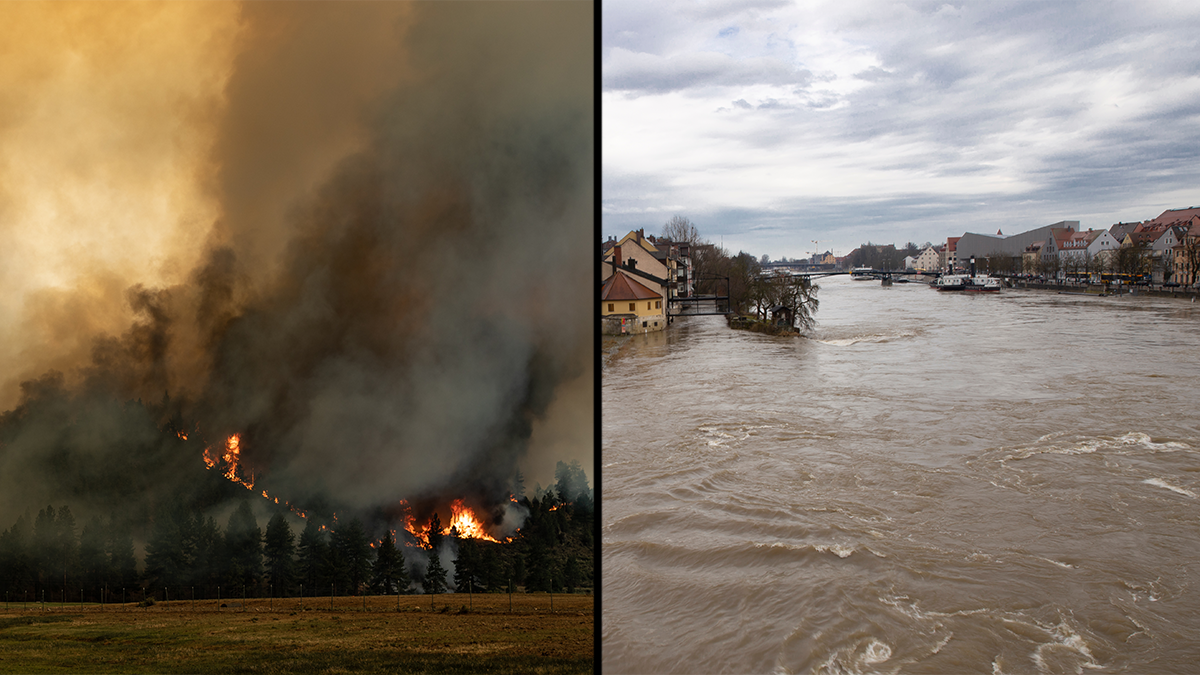In the aftermath of extreme weather events, considering the long-term well-being of affected people and places is critical, says Director of the Carolina Population Center Elizabeth Frankenberg.

This summer we’ve watched extreme weather events unfold around the world, including devastating wildfires in the Western United States, unprecedented flooding in Central Europe and a deadly heat wave in the Pacific Northwest. When the ash stops flying and waters recede, those communities all face the same question: “What’s next?”
Elizabeth Frankenberg, director of the Carolina Population Center and Cary C. Boshamer Distinguished Professor in the College of Arts & Sciences’ sociology department, is a member of Carolina’s Dynamics of Extreme Events, People and Places research group that studies the impacts and recovery from hurricanes and floods in North Carolina.

Frankenberg spoke with The Well about how extreme weather events like the ones we’ve seen this summer affect the well-being of people and places and what the recovery process might look like.
How are communities impacted when they’re hit with an extreme weather event for the first time?
Some events have instantaneous impacts on mortality, permanently changing the lives of survivors, and others destroy property or assets, which influences the local economy. Another factor is the scale of the event — if it’s localized, surrounding communities can immediately respond with aid, but if it’s a widespread event, assistance has to be brought in from some distance. The duration of the impact and recovery process is going to be longer and more complicated depending on the scale and severity of the event. Some communities never fully recover. One question that people inevitably begin to ask as efforts to recover begin is, “Should we have anticipated this, and how can we prepare in the future?”
How has the COVID-19 pandemic affected responses to extreme weather events?
It’s affected every aspect of evacuation and safety plans. It’s typical to set up living or shelter facilities where people can evacuate to and reside if their residence is uninhabitable, and that’s difficult to provide safely during the pandemic. There was an effort in several states during the 2020 hurricane season to put together packages that include masks and sanitation supplies while distancing people indoors. In that case, people have to decide what is the greater threat to public health: COVID-19 or a hurricane.
What is the value in studying the long-term impact of extreme weather events?
I’ve been studying the impact of the 2004 Indian Ocean tsunami for 17 years. By tracking one event consistently, we’ve developed a framework for thinking about what data we need to collect and how to put that data together to uncover short and longer term impacts. Once you have understand what occurred and how to measure population exposure, you can analyze the different ways people are affected over a long time frame. It’s tempting to think of an extreme weather event and its effects as a linear process that fades out over time but that’s not necessarily the case. Some health impacts emerge many years after the event, because stress can take a physical toll over the long-term.
Can government policies help prepare communities for future emergencies after they experience flooding or wildfires for the first time?
Programs are put in place with the best intentions, for example helping families rebuild when they lose their home in a hurricane, or funding short-term needs like shelters or household supplies. There has been less attention to how assistance programs affect people over the longer term. For some people, moving to an area with lower risks may be a better decision than staying put, but that’s not likely to be the case for everyone. These are complicated situations and difficult decisions.
How do extreme weather events affect the long-term health of community members?
Exposure to situations of extreme stress is known to increase the risks of various chronic diseases. In our research on Indonesia, we’ve found that individuals directly exposed to the tsunami are at elevated risk of several markers for for chronic diseases. Not all exposures provoke that kind of long-term health impact, but some do.
As an expert on recovery, what do you think about when watching natural disasters unfold on the news?
I see people experiencing their world change in a very short amount of time. I think about people not knowing if their family, friends and loved ones are safe, or what their next steps should be, and about how people and their leaders are going to have to find a way to recover and figure out what to do next. Mostly, I think about how the road ahead of them is long and complicated.
By Madeline Pace, The Well
